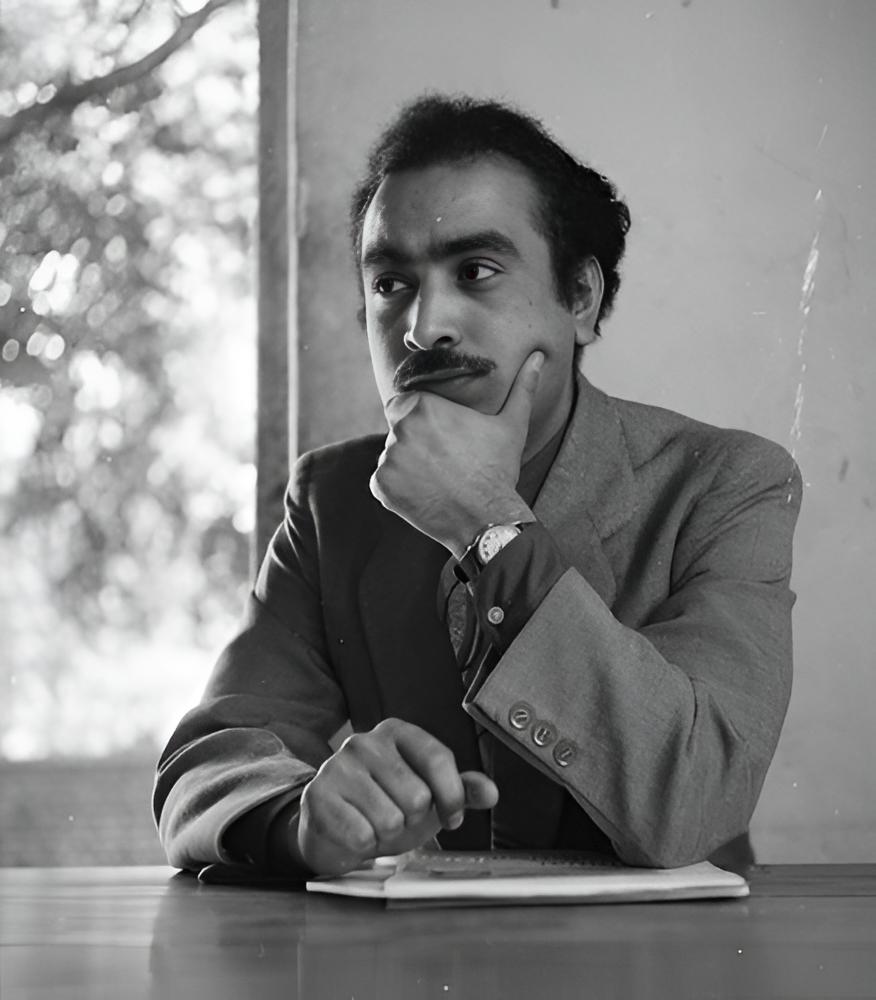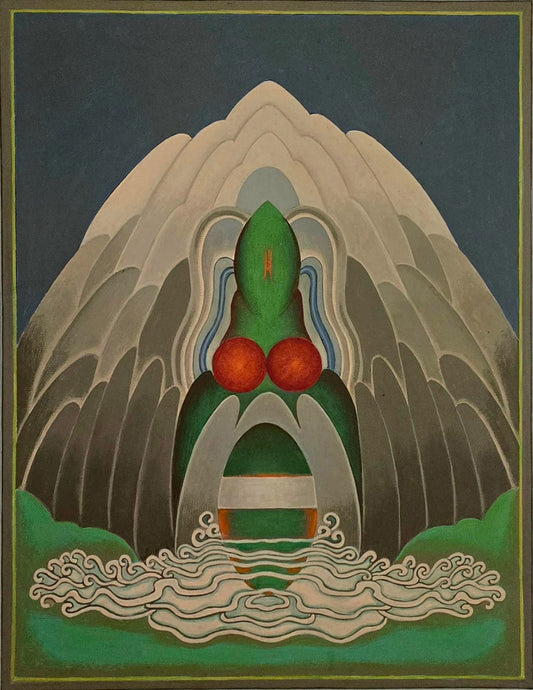
GHULAM RASOOL SANTOSH
Ghulam Rasool Santosh’s life and work were deeply intertwined with the natural world and spiritual inquiry, reflecting a sensibility shaped by the landscapes of Kashmir and a profound engagement with Indian metaphysical traditions. Born in 1929 in the village of Dab near Srinagar, his early years were marked by an intense connection to the orchards, fields, and meadows surrounding him. These formative experiences nurtured a contemplative temperament, evident in childhood anecdotes where his lingering presence in nature delayed school attendance, moments that already revealed an artist attuned to the rhythms of life beyond the classroom.
The influence of his family heritage played a crucial role in Santosh’s artistic foundation. While his father served in the police force, it was his grandfather’s mastery of traditional Kashmiri papier-mâché painting that left an indelible mark. Observing the intricate ornamental motifs and the disciplined craft of his grandfather, Santosh absorbed essential lessons in form, color, and composition. These early encounters with craft and tradition laid the groundwork for a career that would later transcend regional art forms to engage with universal spiritual themes. Santosh’s artistic evolution led him toward a distinctive synthesis of modernism and mysticism. Drawing deeply from Kashmir Shaivism and Tantric symbolism, his paintings became geometric explorations of spiritual concepts, blending rigorous abstraction with the meditative qualities of a mystic’s vision. His compositions often manifest as complex arrangements of shapes and symbols, inviting viewers into a contemplative space where form becomes a vehicle for transcendent experience.
Throughout his life, Santosh embraced a philosophy that saw art as a pathway to understanding deeper truths, channeling Indian metaphysical thought through a contemporary lens. His work occupies a significant place within modern Indian art, not only for its formal innovation but also for its ability to bridge the spiritual and the aesthetic. Santosh’s legacy endures as a testament to the power of art to embody both personal transformation and cultural continuity. His journey from the serene landscapes of Kashmir to the forefront of Indian modernism reflects a lifelong commitment to exploring the intersections of nature, spirituality, and abstraction, leaving an inspiring imprint on the narrative of 20th-century Indian art.


